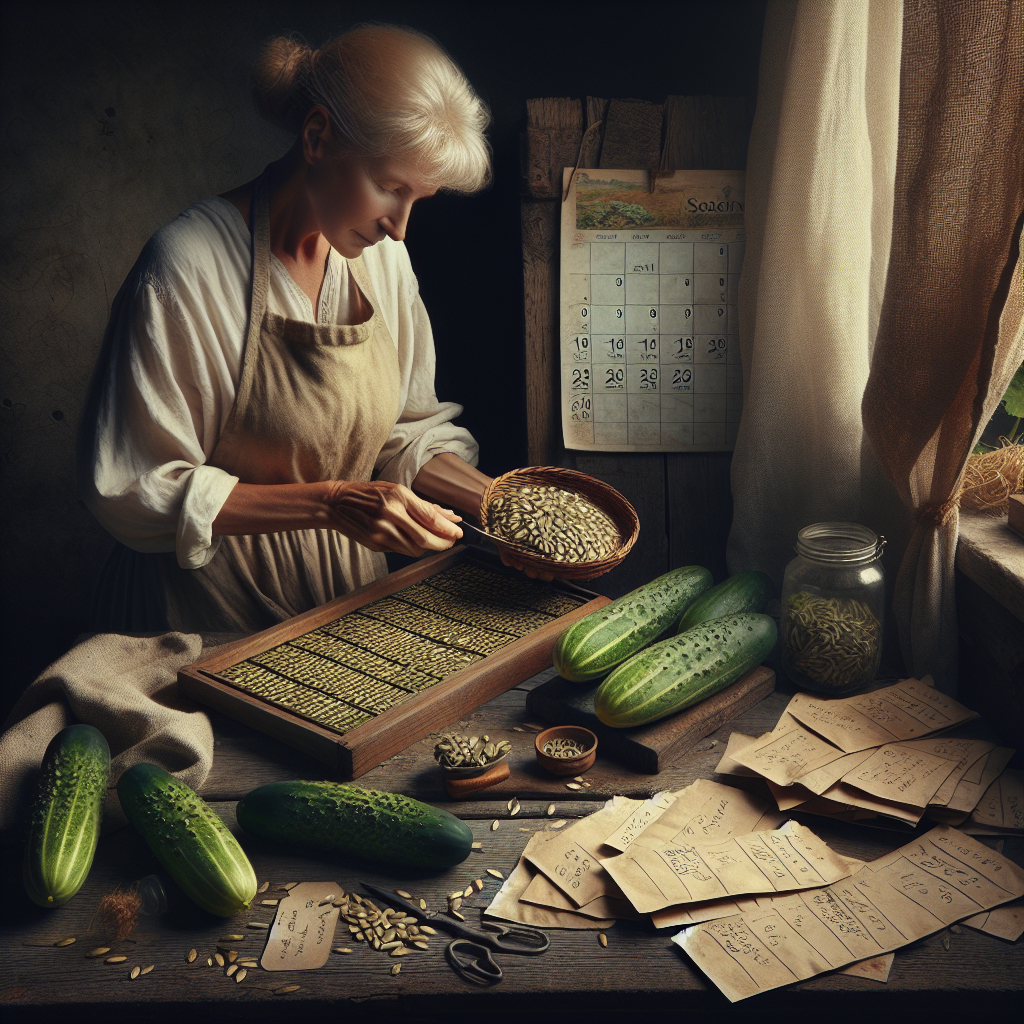
How to store cucumber seeds for next year
How to Properly Store Cucumber Seeds for Next Year
Cucumbers are a popular vegetable in many gardens due to their refreshing taste and versatility in dishes. If you've cultivated your own cucumbers and want to ensure a steady supply for the following gardening season, it's essential to learn how to store cucumber seeds for next year. Saving seeds not only saves money but also allows you to preserve specific varieties and traits that you might appreciate. In this article, we will explore the best practices for harvesting, drying, and storing cucumber seeds.
Why Save Cucumber Seeds?
Before diving into the technicalities, it’s worthwhile to consider the advantages of saving cucumber seeds:
- Cost-effective: Once you save your seeds, you won’t have to purchase them again next season.
- Genetic preservation: Saving seeds helps in maintaining heirloom varieties and preserving the genetics of your plants.
- Personal favorites: You can choose to save seeds from the most flavorful or vigorous plants.
Harvesting Cucumber Seeds
The first step in storing cucumber seeds is the proper harvesting process. Follow these steps for successful seed harvesting:
- Choose the Right Cucumber: Select fully mature cucumbers from plants that exhibit desirable traits, such as size, flavor, and disease resistance.
- Let Them Ripen: Leave them on the vine until they are overripe. This usually means that they have turned yellow or changed color, indicating that the seeds inside are mature.
- Cut Open the Cucumber: Use a sharp knife to slice the cucumber in half lengthwise and scoop out the seeds.
Extracting Cucumber Seeds
Once you have harvested the seeds, the next step is to separate them from the pulp and prepare them for drying:
- Fermentation: Place the seeds and pulp in a jar with a little water. Cover it loosely and let it sit for a few days. This fermentation process helps remove the gel coating on the seeds.
- Rinse the Seeds: After fermentation, rinse the seeds in clean, running water to remove any leftover pulp.
Drying Cucumber Seeds
Drying is a crucial step that ensures your seeds stay viable for the next planting season. Follow these drying methods:
- Air Drying: Spread the seeds out on a paper towel or a clean, dry surface in a single layer. Make sure they are not touching each other to prevent mold growth.
- Use a Dehydrator: If the weather is humid, you can use a food dehydrator. Set it to low heat to avoid damaging the seeds.
Ensure the seeds are completely dry before moving on to the next step. Typically, this can take about 1-2 weeks, depending on the humidity in your area.
Storing Cucumber Seeds
After drying, the next critical aspect is proper storage. When learning how to store cucumber seeds for next year, keep the following in mind:
- Use Appropriate Containers: Choose airtight containers such as glass jars, zip-lock bags, or envelopes. Glass jars are preferable as they provide better protection against moisture.
- Label Your Seeds: Write the variety and the date on each container. This step is crucial for future planting and helps you keep track of the seed's viability.
- Store in a Cool, Dark Place: Find a spot away from direct sunlight, heat, and humidity. A basement, refrigerator, or a temperature-controlled space works well.
Checking for Seed Viability
Before planting your saved cucumber seeds, it is wise to check their viability. Use the following method:
- Water Test: Place several seeds in a glass of water. Viable seeds will sink to the bottom, while non-viable seeds will float.
- Germination Test: Place a few seeds in a damp paper towel. Keep them in a warm area and check for sprouting over a week or so.
Common Mistakes to Avoid
While saving and storing cucumber seeds can be straightforward, there are common pitfalls to avoid:
- Not Choosing the Right Varieties: Ensure that you have saved seeds from open-pollinated varieties for true seed reproduction.
- Inadequate Drying: Storing seeds that are not fully dried can lead to mold and rot.
- Ignoring Labeling: Forgetting to label your seeds can create confusion when you want to plant them again.
Optimal Conditions for Seed Longevity
To further ensure your seeds remain viable for years, consider these optimal storage conditions:
| Condition | Ideal Range |
|---|---|
| Temperature | 32°F to 41°F (0°C to 5°C) |
| Humidity | 40% to 60% |
| Light exposure | Dark |
Conclusion
Storing cucumber seeds for the next gardening season can be a gratifying process that offers numerous benefits. Whether for cost-effectiveness or preserving heirloom varieties, knowing how to store cucumber seeds for next year effectively can enhance your gardening experience. By following these steps—harvesting, drying, and storing—your seeds can maintain their viability for years to come.
As you embark on your gardening journey, remember to take care and pay attention to detail. Happy gardening, and may your cucumber plants flourish in the seasons to come!
By Guest, Published on October 5th, 2024